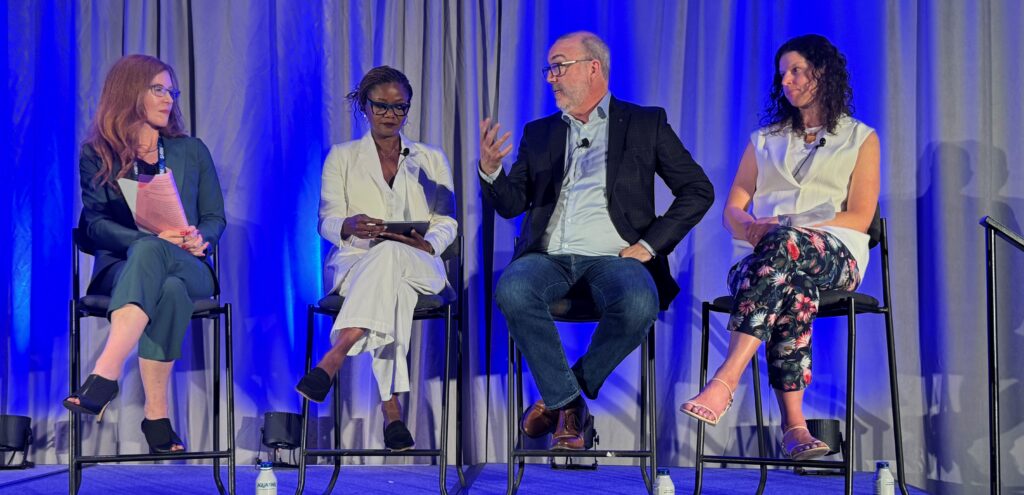The Case for Paying Nonprofit Employees a Living Wage
By The C3 Team


A Path to Justice, Sustainability, and Culture Transformation
Our world — and the communities where we live, work, and play — are placing greater value on fairness. Many nonprofit organizations were founded to champion justice, dignity, and overall well-being, and continue to work tirelessly toward these goals. However, while these efforts are focused on external impact, organizations often overlook the need to evaluate their own internal policies and practices.
In fact, many have yet to evaluate one key question: whether or not they are paying their employees a living wage.
Internal pay practices are an opportunity for organizations to promote their missions by ‘living their values’ and using their internal approach to pay as a beacon for the outside world. Paying a living wage offers benefits beyond simply modeling ethical pay practices. It also supports longer tenure via lower turnover, higher employee engagement, and greater stewardship of the organization’s assets.
There are several reasons why nonprofit organizations should implement a living wage policy:
1. Aligning Pay with the Mission
Many nonprofits are organized around missions that support human rights, fight for environmental sustainability, or advocate for justice throughout society. However, many of these organizations may unknowingly pay wages that fall short of meeting their employees’ basic needs. When considering how to pay for each role, it is essential to go beyond what is merely competitive in the market but to also understand the basic needs for employees living and working in the communities in which we operate
Committing to paying a living wage is an embodiment of an organization’s mission. It boldly states that the organization is not only fighting for fair and sustainable wages, but also living it. This commitment breaks from the outdated idea that nonprofit employees should accept lower wages simply because they serve a noble mission.
2. Improving Financial and Organizational Stability
While it may seem counterintuitive, paying a living wage can improve the overall financial health of a nonprofit organization. While increasing pay will likely increase costs in the immediate term, unplanned turnover is one of the biggest drivers of unproductive expenses. Employee turnover drives costs in several ways – some obvious and others less so. Turnover results in direct costs such as recruitment, hiring, and training. It also disrupts an organization’s ability to deliver on its mission, affects service quality, and leads to burnout of the remaining staff.
Employees who earn a fair wage tend to be more loyal, which can lead to a more stable and effective workforce. Employees who do not need to work additional jobs to meet their basic needs are also better equipped to serve the organization’s mission and stakeholders. Lower turnover also leads to greater engagement in the work at hand and an external reputation that improves the quality of candidates an organization is able to attract.
3. Enhancing Organizational Culture and Employee Well-Being
An organization’s values and culture are often reflected in its compensation policies and practices. Paying a living wage sends a reinforcing message that the organization and its leaders value and respect their employees. It also fosters a culture of dignity by recognizing that basic financial well-being is a priority. This approach can improve morale, motivation, and job satisfaction. When employees are paid a living wage, they are better able to meet basic subsistence and are more likely to contribute to the strengths within the organizational culture.
4. Strengthening Community Trust and Showing Accountability
Nonprofits generally benefit from the trust they have gained from donors, stakeholders, and the communities they serve. By prioritizing a living wage, nonprofits demonstrate accountability and integrity. Donors and supporters want to see that their contributions are funding impactful programs and supporting fair labor practices. An organization that is transparent about its commitment to fair compensation will likely gain and retain the trust essential for long-term sustainability.
5. Setting a Sector-Wide Precedent
In this moment, the nonprofit sector has a powerful opportunity to set a precedent for other industries by championing a living wage. Nonprofits can lead by example and demonstrate how balancing fiscal responsibility with ethical employment practices is not only possible but is also in the best long-term interests of the organization and its stakeholders. In this way, they can challenge the status quo and push for systemic change that elevates standards for workers across all sectors.
Begin the Path to Paying a Living Wage
Paying a living wage in the nonprofit sector is not merely an operational tactic; it can be a transformative strategy that benefits organizations, employees, and the communities and stakeholders they serve. It aligns with core values of justice, bringing financial benefits through increased retention and productivity, fostering a positive culture, and enhancing the quality of talent serving the sector.
It signals to the world that these organizations are not only advocates for change but also practitioners of the values they champion. As nonprofit organizations strive to treat their own people justly, implementing a living wage is one of the most effective strategies to achieve this mission.
related Insights






